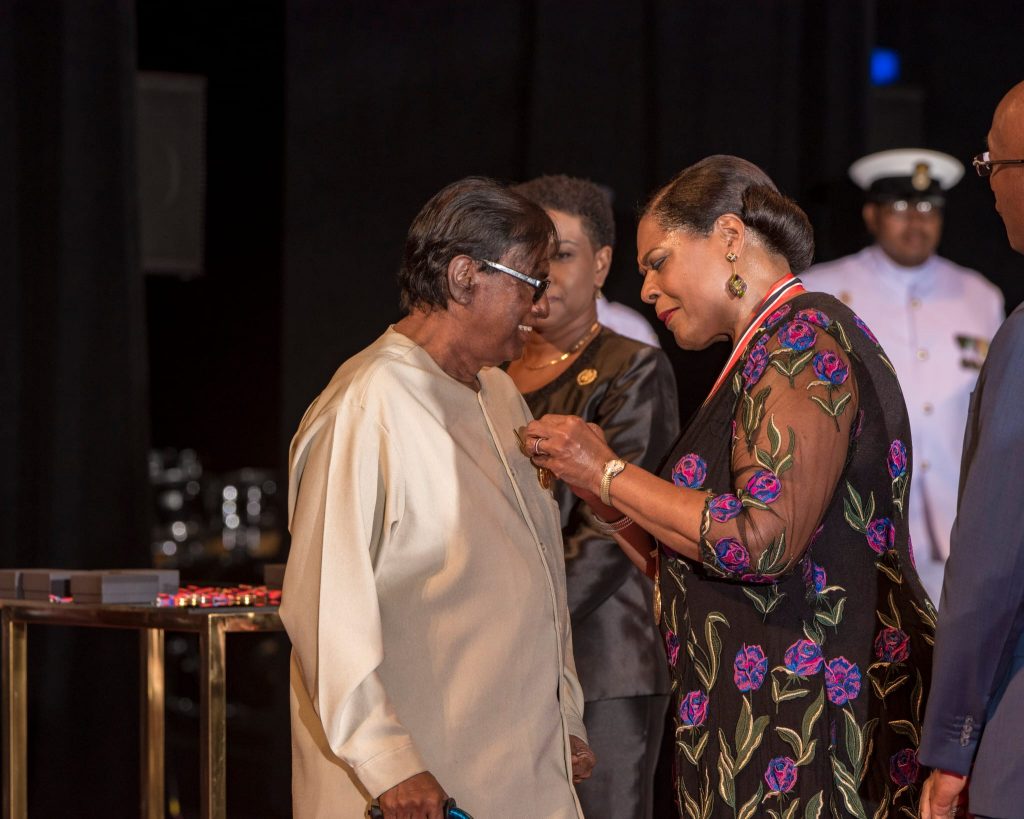“Ram Leela is not important,” said a parliamentarian when a leader of a Ramleela group pleaded with her to intervene on their behalf for funding for Ramleela from the Ministry of Culture. Another parliamentarian was implored to intervene on behalf of the National Ramleela Council and to date there has been no feedback.
After applying for funding from the Ministry of Community Development, Culture and the Arts the President of the National Ramleela Council, Ms Kamalwattie Ramsubeik, was told that the applications should be redo and sent to the newly formed Ministry of Culture, Art and Tourism.
Ms Ramsubeik was also informed that the applications had to be completed online which many found most challenging. Nevertheless, the applications were sent but to date there has not any response from the government and Ramleela has now ended.
Worst was the encounters several Ramleela groups had with accessing moneys from their accounts in the banks. Many could not make full withdrawals as only a small sum was made available to them. Despite these challenges, the parliamentarians who are supposed to represent Ramleela groups have proven to be a disappointment.
Ramleela, an open-air portrayal of the epic Ramayan, is an annual event in Trinidad and Tobago, a Caribbean nation with a population of 1.39million with Hindus forming 20% of the population. Indians, brought to labor in the sugar cane estates beginning in the 1840s, settled in free villages after serving their contracts. It is in those free villages that the awakening of Indian cultural consciousness began taking roots. The ideological framework of this cultural awakening and identity was the Ramayana.
Dr. Primnath Gooptar, author, educator and national awardee, has played a pioneering role in the formation of the National Ramleela Council of Trinidad and Tobago. “The first meeting of Ramleela groups took place in 1991 at the Maha Sabha Headquarters. The objective was to present a united voice to access funding from the Ministry of Culture,” said Dr. Gooptar. Ms Ramsubeik has played a herculean role in the establishment of this organization. “In 1995 we had 10 groups and by 2012 there were 35 registered members,” said Ms Ramsubeik. “In the pre-Covid era there were an average of 20 to 25 active venues. However, in the post-covid era it has fallen to 15.”
Covid continues to be a challenge. People are still hesitant to assemble in large numbers. Nevertheless, the major reasons for the decline in the number of venues this year is mainly poor funding. The downturn in the economy has placed many out of jobs and several small businesses have suffered financial losses during the pandemic and are yet to return to normalcy. “The failure of the Ministry of Culture to provide funding is a major setback. Sometimes I wonder if there is a place for Ramleela in the Ministry of Culture,” lamented Ms Ramsubeik.
The Sangre Grande Ramleela, hosted by the Sangre Grande Ramleela Committee, has developed a new format that has won the admiration of the people of Sangre Grande. Carried live each night on TV Jagriti, the Ramleela is portrayed on a huge stage indoors as Pandit Bownath narrates the Ramayana. “The community of Sangre Grande are deeply impressed, and all have come out to support the efforts of the organizers,’ said Dr. Gooptar.
Sieupersad Motilal has been making his contribution to the Satya Drishti Ramleela (Lower Barackpore) by building a 30-foot-high Ravana from bamboo, wood, wire and paper. “It is quite challenging,” said Sieupersad. “Building a Ravana is time consuming, and manpower is scarce since it is voluntary. The cost of putting out a Ravana averages $6,000 which includes cutting the bamboo, construction, transport and having the finished product erected on the Ramleela ground.”
Sudarshan Motilal has been playing Rama in the Satya Drishti Ramleela for the past seven (7) years. Asked why he plays Rama, Sudarshan said: “Rama represents the ideal man-maryadha-and portraying such a character force me to train my mind, body and spirt.”
Two years ago, a group of people from India conducted a workshop on Ramleela Arts and Sudarshan was among the trainees. Sudarshan sees Ramleela as “an experience young Hindus should take pride in to connect with the gods and their superhuman qualities.”
In 2015 Dr Primnath Gooptar published The Ramleela of Sangre Grande to commemorate the 25th Anniversary of Ramleela by the Sangre Grande Ramleela Committee. Gooptar said that “it is the first comprehensive book on Ramleela and many scholars in the field in India were happy to purchase copies.
Dr. Gooptar said that a major setback to Ramleela is the lack of succession planning. “Some of the pioneers of Ramleela in the villages had been unwilling to teach the younger generation and handover the reins of power,” said Dr. Gooptar who also noted that “there was the belief that when Ramleela is started it must be held for five years. Because of this, several venues ceased to have Ramleela after five years,” said Dr. Gooptar.
“If Ramleela must strive among the people, the last people to rely on for help are the government and politicians. Ramleela must continue to be a community affair with its focus on developing the artistic talents in our youths. Ramleela is an opportunity to appeal to the people to incorporate Maryadha Puroshtama, the Ideal One, into their lives,” said Ms Kamalwattie Ramsubeik, President of the Ramleela Council of Trinidad & Tobago.
